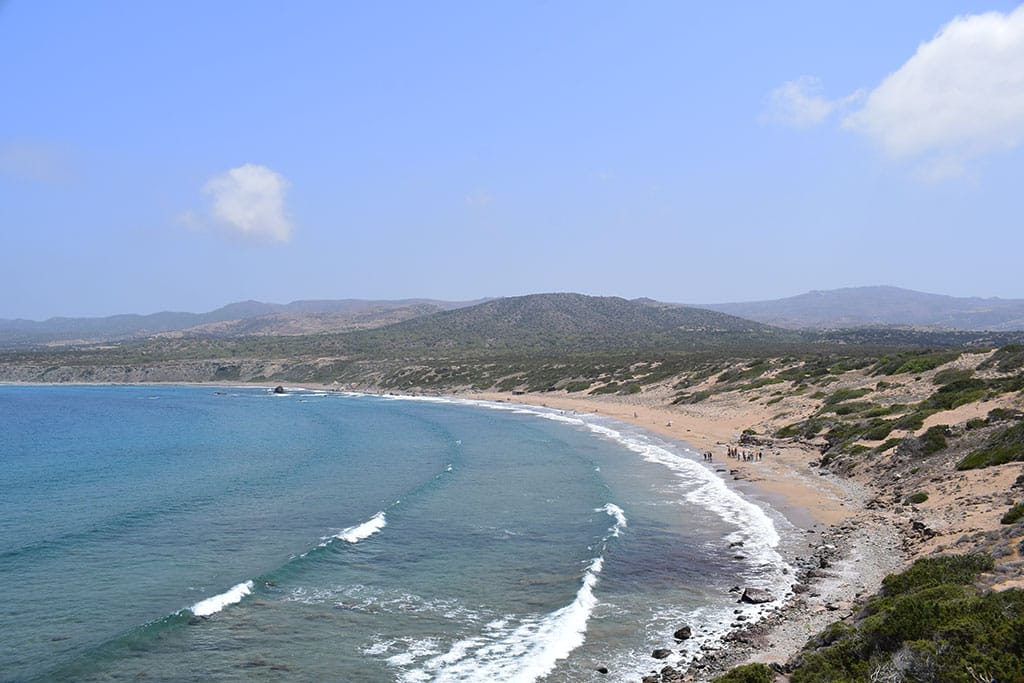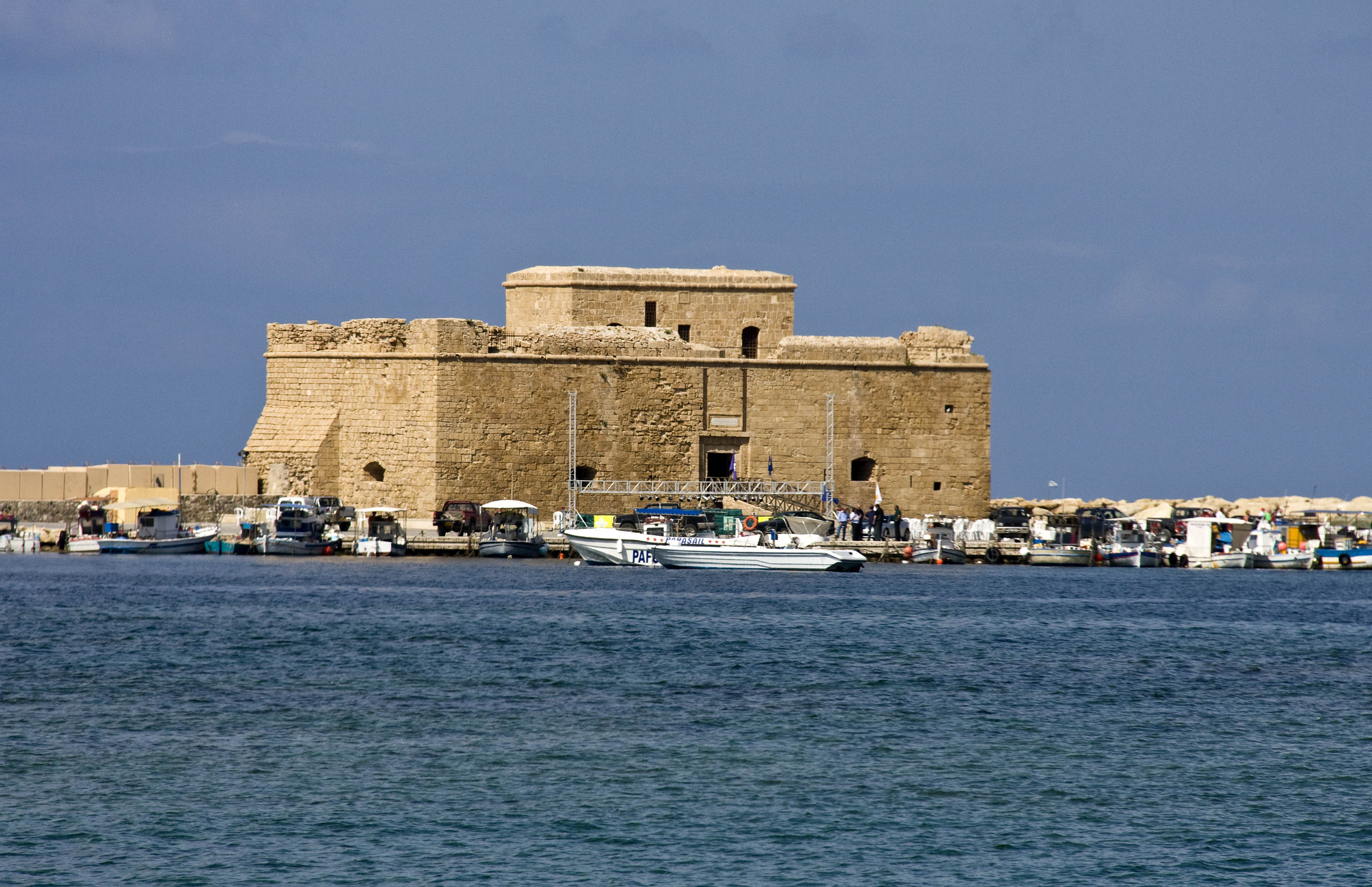Perched on the southwest coast of Paphos, this captivating city is steeped in legend and bathed in Mediterranean light. Believed to be the birthplace of Aphrodite, the goddess of love, it’s a destination where ancient Greek mythology, archaeology and seaside living blend seamlessly. Whether you’re here for a weekend escape or a longer Paphos holiday, the city offers a rare mix of culture, calm and coastal beauty. For many travellers who visit Paphos, the city feels like a timeless gateway into the soul of Cyprus.
A walk through time
Few cities wear their history as openly as Paphos. The Kato Paphos Archaeological Park, a UNESCO World Heritage Site, showcases a remarkable collection of Roman villas, intricate mosaics, and ancient theatres — all overlooking the glittering sea. Nearby, the Tombs of the Kings stand as a hauntingly beautiful reminder of Cyprus’s Hellenistic past.
In the heart of town, the Paphos Castle guards the old harbour, its stone walls glowing gold at sunset. Around it, fishing boats sway gently beside modern cafés and seafood restaurants, offering the perfect backdrop for an evening stroll.

Beaches and the beauty of nature
Paphos’s coastline stretches for miles, offering beaches to suit every mood. Coral Bay, with its soft sand and calm waters, is ideal for swimming and family days out. For something quieter, Lara Beach on the Akamas Peninsula feels wonderfully wild — a protected nesting site for sea turtles and a paradise for nature lovers.
The nearby Akamas National Park is one of Cyprus’s true treasures: a rugged landscape of gorges, wildflowers, and hidden coves, perfect for hiking or jeep safaris. Don’t miss the Baths of Aphrodite, a shaded grotto where, according to legend, the goddess met her lover Adonis.
Restaurant Reviews: Paphos
Paphos Old Town: Culture, colour and local life
Away from the seafront lies Paphos Old Town, an area that has seen creative revival in recent years. Traditional buildings have been transformed into cafés, artisan workshops and galleries, giving the town centre a vibrant, youthful atmosphere. Streets are decorated with murals, small sculptures and cultural installations that reflect both tradition and modern Paphos.
The municipal market is the beating heart of old Paphos, where locals gather each morning to shop for fresh produce and homemade sweets. Exploring this area feels like discovering a hidden gem, where everyday life unfolds at its own relaxed pace.
In contrast, new Paphos—just a short distance away—features shopping centres, hotels and modern developments. The balance between historic charm and contemporary living is one of the reasons so many travellers return to visit Paphos again and again.
Beautiful beaches and natural escapes
One of the greatest draws of the Paphos area is its coastline. From lively beachfronts to remote coves, every visitor finds their place by the sea. Coral Bay, a popular blue flag beach located slightly north east of the main town, is perfect for families and swimmers. The sand is golden, the waters are clear, and local tavernas are never far away.
For something more peaceful, head to Lara Beach on the Akamas Peninsula. This protected area is a sanctuary for endangered sea turtles and remains blissfully undeveloped. Nature lovers often describe it as Paphos’s true hidden gem.

The nearby Akamas National Park is ideal for hiking, jeep safaris, and scenic photography. Its rugged trails lead to wild gorges, secluded bays and rare plants found nowhere else on Cyprus. Don’t miss the Baths of Aphrodite, a shaded grotto where, according to legend, the goddess Aphrodite met Adonis.
Life by the Water: The harbour and beyond
For many travellers, the soul of modern Paphos lies by the sea. The Paphos harbour is the centre of coastal activity, with boats bobbing gently next to waterfront cafés and promenade walks. From here, several boat trips and boat tour options depart daily—ranging from dolphin watching and glass-bottom excursions to sunset cruises and snorkeling adventures.
A Paphos holiday would not be complete without a day on the water. Local operators offer guided marine tours, and private yachts can be hired for special occasions or romantic sunset outings. Watching the coast from the sea gives a new perspective on the cliffs, beaches and coves that shape the landscape of Paphos Cyprus.
Taste of tradition: Wineries and Mediterranean cuisine
Cypriot cuisine is a celebration of local ingredients and Mediterranean simplicity. By the Paphos harbour, visitors can enjoy seafood meze, grilled octopus and freshly caught fish. Beyond the coast, small villages offer tavernas where traditional dishes—like moussaka, kleftiko and grilled halloumi—are served with pride.
Wine lovers will appreciate the chance to visit a local winery, many of which are nestled in the hills surrounding Paphos. The village of Kathikas, about twenty-five minutes from the town centre, is especially well-known. Here you can taste island varieties like Xynisteri and Maratheftiko, often paired with olives, cheese and freshly baked bread. These wineries offer an authentic glimpse of rural life and remain some of the most rewarding experiences in Paphos area exploration.
Living the good life in Paphos
More than just a tourist destination, modern Paphos has become a lifestyle choice for many. With its marina developments, beautiful beaches, international schools and growing expat community, it strikes a balance between convenience and tradition. Locals gather in the town centre for coffee, conversation and slow afternoons. Meanwhile, hikers, divers and history enthusiasts use Paphos as a base to explore western Cyprus.
The Paphos area is also ideal for day trips. Drive into the Troodos foothills to discover stone-built villages like Omodos or Pissouri, where life follows a slower rhythm and time seems to stand still.
Between sea breezes, café terraces and the echoes of church bells ringing over Paphos Old Town, the lifestyle here invites people to stay longer than they planned. It is Mediterranean living—relaxed, authentic and endlessly sunny.
No visit to Paphos feels complete without standing at the edge of Petra tou Romiou, also known as Aphrodite’s Rock — one of the most iconic sights in the entire Paphos area. Located just east of the town on the coastal road towards Limassol, this natural landmark is believed to be the very spot where the goddess Aphrodite emerged from the sea, bringing beauty and love into the world. The surrounding coastline is dramatic, with turquoise waters crashing against limestone cliffs — especially breathtaking in the early morning or at sunset. While swimming around the rock is said to bring eternal youth and romance, many simply come to admire its mythology and postcard-perfect views.

The Akamas Peninsula
The peninsula itself is a protected area, celebrated for its biodiversity and striking scenery. The Aphrodite and Adonis Trails wind through gorges, cedar groves, and limestone cliffs, offering glimpses of endemic flora, wild goats, and panoramic views over the Mediterranean. The Blue Lagoon, with impossibly clear turquoise waters, is one of the peninsula’s crown jewels — reachable by boat or a rugged 4×4 track. Secluded beaches like Lara Bay are renowned for turtle nesting, making conservation a key aspect of any visit.
Close by is Latsi, a charming coastal village that serves as the gateway to the Akamas Peninsula. Its small marina, fishing boats, and sea-view tavernas provide a perfect base for exploring the area. Sunset dinners on the waterfront, fresh seafood, and quiet evening strolls along the shore capture the relaxed, maritime charm of the west coast.
If you have time to spare it may be a good idea to head east from Latsi, pass by Polis, Argaka and in 25-30 minutes you will reach Pomos, a tiny village perched atop cliffs overlooking the sea where time, at least for now, seems to have stood still.
A couple of kilometres before you reach Pomos, you will find Koulla’s Sandwiches. Freshly made sandwiches are served in generous portions and at reasonable prices but what stands out here is the stunning view, not to be missed if you are in the area.
The Akamas region and its surrounding villages are for those seeking nature, solitude, and authenticity. Here, the Mediterranean is both wild and intimate: hidden beaches, forest trails, and small fishing ports create a tapestry of experiences untouched by mass tourism. For hikers, birdwatchers, or anyone craving the quieter side of Cyprus, Akamas, Latsi, Polis, Pomos, and Pyrgos are a revelation — a chance to connect with the island’s landscapes, wildlife, and traditional rhythms.
The heart of the west coast
Paphos is a city shaped by myth, blessed with nature, and preserved through time. It is both ancient and modern, sacred and sunlit—a place where stories linger in carved stone, and where the sea sparkles at every turn. Whether your journey begins in Nea Paphos, a local winery, or on a boat tour by the harbour, you’ll feel the spirit of the island around you.
It doesn’t matter if you come for a short break or a long stay—visit Paphos once, and it’s likely to stay with you long after you’ve gone.
Practical Information for Visitors and Newcomers
Getting there
Paphos International Airport (PFO) is just 15 minutes from the city centre and serves regular flights from major European cities including London, Manchester, Frankfurt, and Munich. Larnaca Airport is about 1 hour 30 minutes away by car or intercity bus.
Getting around
Paphos is compact and easy to explore. The harbour, old town and main attractions are walkable, while local buses connect the city with Coral Bay, the airport and surrounding villages. Car hire is recommended if you plan to explore the Troodos Mountains or Akamas Peninsula.
When to visit:
• Best months: April–June & September–November
• Peak summer: July–August — hot and lively
• Winter: December–February — mild and peaceful
Where to stay
Accommodation ranges from seaside resorts and boutique hotels to family-run guesthouses and self-catering villas. The Kato Paphos area is ideal for beach access and nightlife, while Pano Paphos (Ktima) offers quieter streets and local character.
Best time to visit
Paphos enjoys mild winters and hot, sunny summers. The best months to visit are April to June and September to November, when the weather is warm but not too hot, and the sea is perfect for swimming.
For long-term residents
Many expats choose Paphos for its relaxed pace and international community. English is widely spoken, healthcare is high-quality, and there are good international schools. The cost of living is generally lower than in Limassol or Nicosia, and the region’s laid-back lifestyle appeals to digital nomads and retirees alike.
Local Tips
- Try a glass of Commandaria or a local Paphos wine in one of the hillside villages.
- Visit the Paphos Archaeological Park early in the morning to avoid the midday heat.
- For a quiet swim, head to Lara Beach or Sea Caves instead of the main tourist spots.
- Parking in the harbour area is limited in summer — consider the nearby municipal car park.
To explore more:
Essential tips, customs, and useful words for Cyprus visitors
Paphos: Where myth, history and the sea meet
Aphrodite’s Rock: The heart of Cyprus’ coastal magic
Nicosia: Inside Europe’s last divided capital
From flamingos to Finikoudes: Fall in love with Larnaca
Limassol: The Mediterranean city that has it all
Protaras – Cyprus’s family-friendly coastal gem
Ayia Napa: Cyprus’s sun-drenched blend of buzz and beauty
Best beaches in Cyprus – From golden sands to hidden coves
Cyprus, but cooler: Why Troodos is the island’s best-kept secret
Omodos: A timeless mountain village in the heart of Cyprus
Unearthing Cyprus: Walking through 10,000 years of history
UNESCO world heritage sites in Cyprus: What to see, why they matter, and how to visit
A guide to Nicosia’s modern retail landscape
Traditional Cypriot dishes: A guide to the most popular foods in Cyprus
What is the best time to visit Cyprus?
Moving to Cyprus: A guide to the pros and cons
Where to live in Cyprus? A guide to each major city (pros & cons)
Understanding Cyprus’ time zone and how it compares with Europe, the UK, and the US







Click here to change your cookie preferences